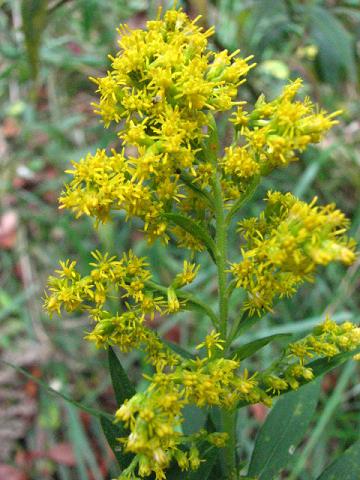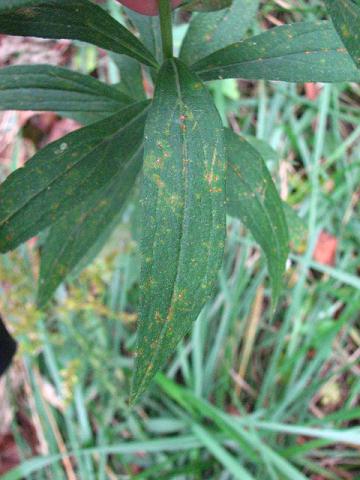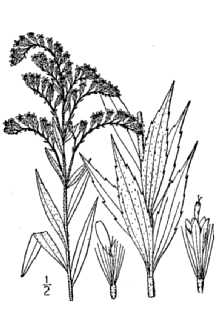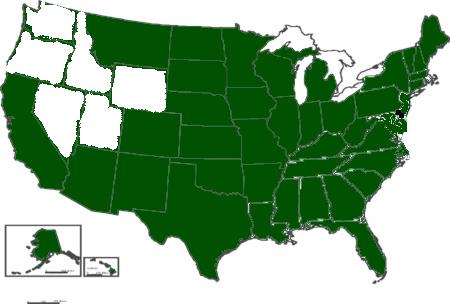Solidago altissima

 |
 |
Photo Courtesy Renee Brecht |
Britton & Brown |
| Botanical name: | Solidago altissima |
| Common name: | tall goldenrod |
| Group: | dicot |
| Family: | Asteraceae |
| Growth type: | forb/herb |
| Duration: | perennial |
| Origin: | native |
| Plant height: | 3 - 6' |
| Foliage: | alternate; margin toothed, remotely toothed: i.e., larger teeth on lower leaves and smaller teeth on upper leaves; upper surface dark green, rough, 3 veined with 2 veins being parallel to the midrib |
| Flower: | yellow, in plume-shaped cluster 3-5 inches across, secund, flower rays very small |
| Flowering time: | July - October |
| Habitat: | dry open places |
| Range in New Jersey: | statewide |
| Heritage ranking, if any: | n/a |
| Distribution: |  |
| Misc.: | S. altissima��is part of the��Solidago canadensis��species complex. S. altissima��has sometimes been classified as a variety of��S. canadensis. In distinguishing between the two, note that S. altissima is remotely toothed; S. canadensis is sharply toothed. Also,the leaves of S. altissima are scabrous (rough to the touch) on the surface, and somewhat downy beneath. S. canadensis is not. Both S. altissima and S. canadensis are largely lacking in basal leaves. altissima��= very tall Tall goldenrood is food for many types of bees, wasps, butterflies, moths, beetles, and other insect species.��Praying mantises often lay their eggs on goldenrod. It tends to grow in colonies and the stands provide cover for birds and small mammals. Tall goldenrod was used medicinally by Native Americans to relieve cramps, as well as as a dye for wool, silk, and other fabrics. Tall goldenrod is often mistakenely blamed for causing hay fever because it blooms at the same time as the real culprit, ragweed.�� Witmer Stone, 1910, notes that S. altissima is often found growing with Gnaphalium obtusifolium. |